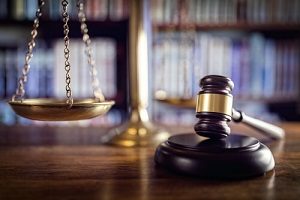Question of the Week — Is the use of public nuisance law against J&J for its role in the opioid crisis appropriate?

The landmark $572M opioid verdict in Oklahoma against Johnson & Johnson stemmed from a single claim: “public nuisance” under state law. Other cases against opioid manufacturers, including whistleblower cases, involve claims for fraud, unlawful marketing, improper prescriptions, kickbacks, violating the Controlled Substances Act by failing to report suspicious purchases, and even flooding the black market. But public nuisance law historically addresses a person’s use of land that interferes with a public right, for example, blocking a public highway or diverting a waterway. How did J&J’s actions amount to a public nuisance?
Traditional land-based public nuisance law evolved to apply to noxious and offensive trades interfering with public health, comfort, or morals. In Oklahoma, by statute a public nuisance is an unlawful act which either:
(1) annoys, injures or endangers the comfort, repose, health, or safety of others,
(2) offends decency,
(3) interferes with waterways or public property, or
(4) renders other persons insecure in life or in the use of property.
See 50 O.S. 1981 section 1. Under Oklahoma law, a public nuisance “is one which affects at the same time an entire community or neighborhood, or any considerable number of persons, although the extent of the annoyance or damage inflicted upon the individuals may be unequal.” 50 O.S. section 2.
According to Oklahoma’s attorney general, 18 million opioid prescriptions were written in a period of four years in a state with a population of only 3.9 million. The trial judge observed that in 2015 alone, enough opioid pills were dispensed for every adult in the state to have 110 pills. Over 6,000 Oklahomans have died from opioid overdoses and many thousands are addicted. As for J&J, the judge noted that its sales staff visited doctors, particularly high-volume opioid prescribers, hundreds of thousands of times in the period leading up to the opioid crisis. J&J developed a poppy variety in Tasmania and supplied most of the U.S.’ opioid material to other manufacturers. The company aggressively marketed opioids for everyday pain (not merely breakthrough pain), and assured doctors that what looked like opioid addiction was actually “pseudoaddiction” or “under-treated pain” and that “there was a low risk of abuse” when it knew and internally discussed otherwise.
At trial, J&J said its conduct cannot be said to have “caused” the injuries. Public-nuisance traditionalists argue that the theory should not apply to product manufacturers because once the product has left the manufacturer, they no longer have control of the nuisance, and they cannot abate it. J&J also argued that a finding of liability would unlawfully abridge its First Amendment right to commercial speech about its lawful products.
Rejecting these defenses, the judge found that J&J created a public nuisance “affecting entire communities and neighborhoods” within the meaning of the Oklahoma statute. The law is not limited to effects on property, the judge said, and in any event J&J used property in the state to create the nuisance. J&J’s “dangerous marketing” “caused exponentially increasing rates of addiction, overdose deaths, and Neonatal Abstinence Syndrome,” amounting to an unlawful act that “annoys, insures, or endangers the comfort, repose, health, or safety of others.” J&J’s commercial speech in communicating about its products was not protected because it was untruthful and influenced doctors. J&J could abate the nuisance by paying to help fix the effects of the crisis.
J&J has vowed to appeal this “radical departure” from law. The company decries the application of public nuisance to “any commercial activity, let alone the highly regulated area of prescription medicines.”
Other attempts to expand the use public nuisance theories have met with mixed results: asbestos, guns, lead paint, water and air pollution, and climate change. Some credit the public nuisance theory for the landmark tobacco settlement in 1998, which resulted in sales and marketing restrictions on commercial speech and ongoing payments of commercial revenue to states amounting to $27B and counting.
The tort of public nuisance evolved to fill gaps not otherwise covered by law or regulation. For some, the use of public nuisance in this context is an unwarranted extension of its historical protection from interference with public rights (commonly affecting land use); use of public nuisance against commercial product manufacturers, particularly for highly regulated products, is an ill-fitting tool to address essentially a public policy issue. For others, such as the state of Oklahoma and numerous others state AGs, applying the public nuisance doctrine appropriately fills a regulatory gap to prevent exploitation of the public. It shifts the costs to a company that, having profited from nuisance it helped to create, is able to finance abatement.
The creative use of public nuisance law to address J&J’s activities arguably reflects frustration with existing systems that failed to prevent the opioid crisis, from which it will take years to recover. Whistleblowers have exposed some of the wrongful conduct regarding opioids. Whistleblowers are sometimes the only ones sounding early warning signs of potentially devastating effects of misconduct. If you have information about wrongdoing and might have a whistleblower case that could put a stop to it, contact us confidentially.
Other useful links:
- Whistleblower FAQs
- I Think I Have a Whistleblower Case
- Whistleblower Blog
- Healthcare and Pharmaceutical Fraud
Tagged in: Defendants, Healthcare Fraud, Importance of Whistleblowers, Lack of Medical Necessity, Off-Label and Unapproved Use, Pharma Fraud, Question of the Week, Whistleblower Case,